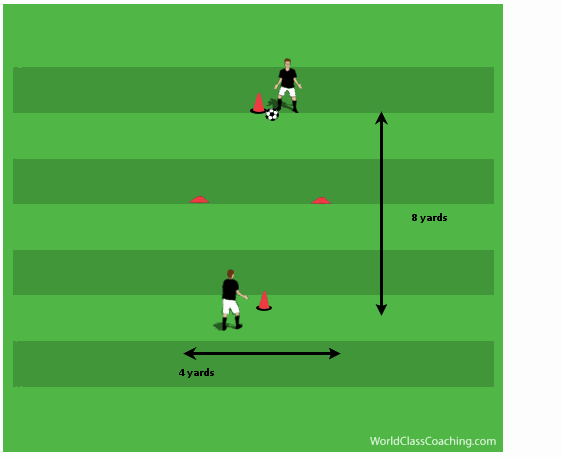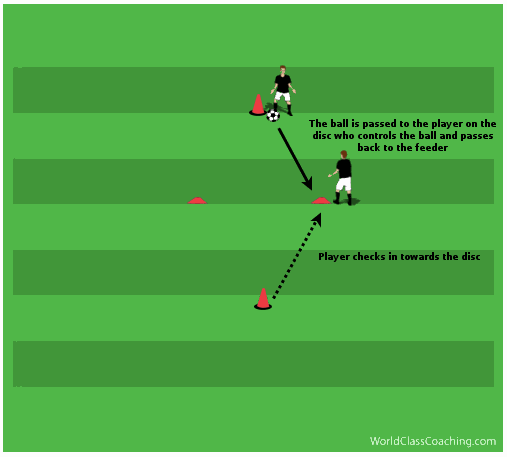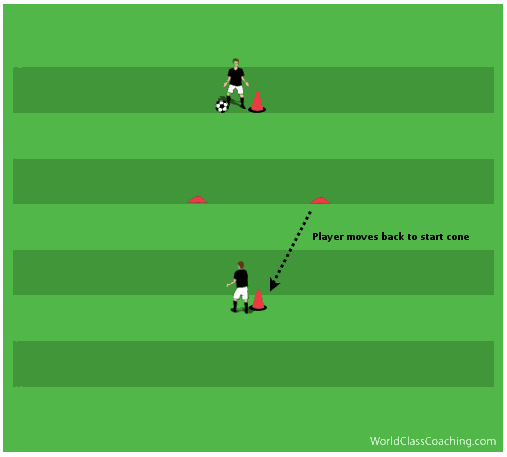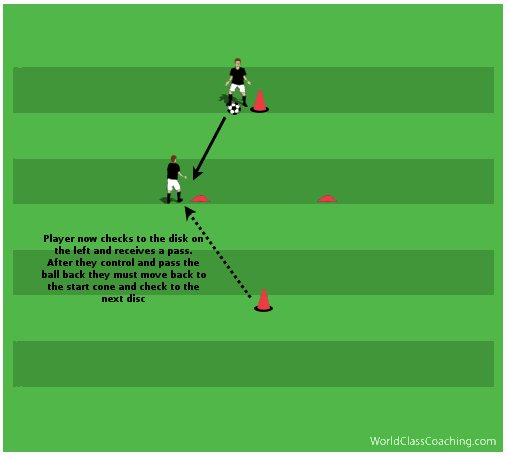Jebreel Bubtana
This technical warm up works on movement to create space away from a defender (checking) and first touch at various heights.
Set up the field as shown below in figure 1.
The player without the ball will sprint to the disc on the right (check to the disc) to start the exercise. As soon as they as they reach the disc they will call for the ball and receive a pass from the feeder. They must control with their right foot and pass the ball back to the feeder with their right foot (figure 2).
As soon as the ball is passed back, the player now jogs back slowly to the start cone (figure 3).
The player now sprints to the disc on the left and receives a pass from the feeder before controlling the ball and passing back with their left foot (figure 4).
[wpsharely id="1886"][/wpsharely]The player working between the cones and discs continues for 2 minutes and then switches roles with the feeder.
The aim with this exercise is the work on different first touches and the ball coming at different heights. Work on the following during this exercise:
- First time passes
- Side foot volleys
- Thigh control and pass
- Chest control and pass
- Headers
After the different heights have been worked on, the very last one can involve the feeder mixing up the throw or pass to challenge their partner at different heights. Now the player working between the cones has to think about what the best thing to do is to get the ball back to the feeder.
Coaching Points:
- When moving towards or “checking” in towards the discs, the player must perform a change of speed and sprint towards the disc. The idea being that this change of speed in a real game will create space between them and the defender, allowing enough time to control the ball or make a first time pass under less pressure.
- You can get the players to practice looking over their shoulder as they check towards the discs. This look over their shoulder will allow them to see what is behind them before controlling the ball in a real game and helps your players get into good habits.
- The body must be behind the ball when controlling. In this exercise the players imagine that the pressure from the defender is coming from behind them so having their body behind the ball will help protect it from the defender.
- When the player working gets to the disc they must communicate with the feeder and ask for the ball. Again, this gets your players into good habits.
Jebreel Bubtana
Director of Marketing at BRASA Brazilian Soccer Academy
NSCAA Advanced National Diploma
NSCAA Director of Coaching Diploma
Follow me on Twitter @jib1989






